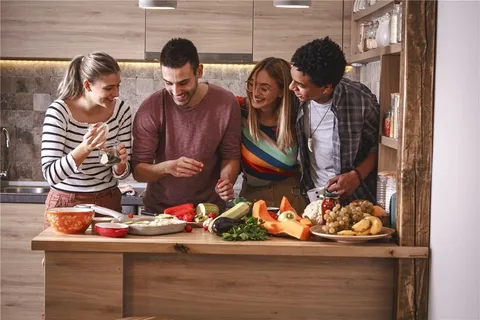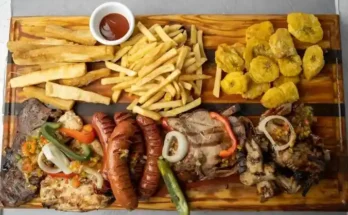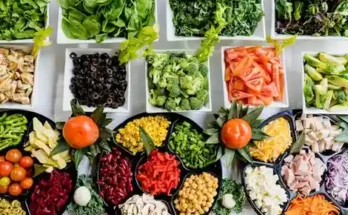Food is more than sustenance. It is memory, culture, comfort, and expression. It transcends language barriers and speaks directly to the senses, often before a word is spoken or a hand is extended. One taste, one smell, one warm bite of something familiar or exotic has the power to transport us across time and geography.
Food has always been one of the most intimate ways humans relate to the world around them. We eat to live, yes—but we also eat to celebrate, to mourn, to welcome, and to remember. In every cuisine, dish, and flavor lies a story. And behind every recipe, there’s a human soul crafting meaning with every ingredient.
A Taste of History:
Long before the invention of written language or modern maps, food defined how communities formed and thrived. Early civilizations grew around fertile rivers not only for water, but because the land promised harvests—grains, fruits, and livestock that would sustain life. Spices once drove explorers to sail across oceans. Salt was so valuable it was used as currency. Tea changed empires, and chocolate played a sacred role in Mesoamerican rituals. The pursuit, preparation, and sharing of food has always shaped our histories—both deliciously and dramatically.
Food travels as people do. As communities migrate or trade, they bring their flavors with them. Consider how Italian pizza took on new life in New York, or how Indian curries evolved across the British Isles. Fusion cuisine is not a modern invention—it’s a natural consequence of movement and mingling. Dishes like ramen, tacos, or dumplings may have regional identities, but they belong to the whole world now. And in each variation lies a blend of heritage, adaptation, and creativity that honors both past and present.
The Emotional Palate:
Taste is deeply linked to emotion. The scent of baking bread can conjure up memories of childhood kitchens. A spoonful of stew might remind someone of a lost grandparent’s Sunday rituals. Food has the extraordinary ability to preserve memory far better than photographs or words.
Our most treasured dishes often come from moments of togetherness—family meals, celebratory feasts, midnight snacks with friends. These meals aren’t simply about eating. They are about belonging, identity, and emotion baked into every bite.
When the world feels chaotic, we often retreat into foods that offer comfort. It might be a bowl of pasta, a favorite soup, or something fried and familiar. These meals soothe us because they remind us of simpler times, of safety and connection. Food becomes a way to emotionally reset. In this way, cooking can also be therapy—ritualistic, creative, and grounding.
Food as Art:
-
The Rise of Culinary Storytellers
Chefs today are not just cooks—they are artists, philosophers, even activists. The plate has become a canvas, and ingredients are the palette. Restaurants now craft multi-sensory experiences, where plating, aroma, and ambiance are as thoughtfully composed as a musical performance.
But it’s not just about the fine dining world. Street vendors and home cooks are equally influential. A humble taco cart in Mexico City can tell a richer story than a 5-star bistro in Paris. Every dish, from haute cuisine to street food, carries intention and inspiration.
-
Food Photography and Social Media Culture
We no longer just eat with our mouths—we eat with our eyes first. The digital age has turned food into visual culture. Platforms like Instagram and TikTok have changed how we experience meals. A simple latte becomes a work of art. A rainbow smoothie bowl gets global attention.
While critics argue that this glamorization can dilute the deeper cultural roots of food, there’s also an argument to be made that photography is a new way of celebrating meals. It’s another kind of storytelling, one that invites others into your food experience, pixel by pixel.
Food as Medicine:
-
Nutrition Beyond Calories
The wellness industry has brought attention back to something ancient—food is medicine. In many cultures, what you eat has always been linked to how you feel, both physically and spiritually. From Ayurveda to Traditional Chinese Medicine, food is used to balance energies and promote healing.
Modern science has caught up to tradition, showing how certain foods can reduce inflammation, boost immunity, and influence mental health. A spoonful of honey, a handful of berries, a bowl of miso soup—they don’t just fill you up, they nourish at a cellular level.
-
Mindful Eating and Food Freedom
Wellness doesn’t mean restriction. It means awareness. In a world obsessed with diet trends and food guilt, mindful eating is a radical return to listening to your body’s cues. It encourages eating with presence—savoring texture, honoring hunger, respecting fullness.
True health comes not from obsession, but from balance. From loving food for what it gives you, not fearing it for what it might take away.
Culinary Sustainability:
Food is not only personal—it’s political. Every choice we make at the grocery store or in the kitchen has an impact. The modern food system contributes significantly to climate change, deforestation, and waste. As awareness grows, so does the movement toward sustainable food choices.
This doesn’t mean abandoning your favorite dishes. It means supporting local farms, reducing meat consumption when possible, avoiding unnecessary packaging, and embracing seasonal produce. Small changes scale up when adopted collectively.
A surprising trend in sustainability is the return to the old. Ancient grains like millet, amaranth, and sorghum are making comebacks for their nutrition and resilience. Indigenous crops that require less water and resist pests are being replanted and revalued.
These ingredients don’t just feed the body—they restore biodiversity, revive culinary heritage, and remind us that food is a gift, not a given.
Conclusion:
No matter where you’re from, what language you speak, or what beliefs you hold—everyone eats. Food unites us in our most basic needs and our highest celebrations. It invites conversation, encourages curiosity, and bridges worlds that might otherwise never touch.
It’s easy to overlook the miracle of a meal in our fast-paced world. But behind every grain of rice, every spoonful of stew, every carefully folded dumpling, lies history, humanity, and hope.
So the next time you sit down to eat, pause. Savor. Remember that you’re not just feeding your stomach. You’re feeding your soul, and taking part in the most universal story ever told.




